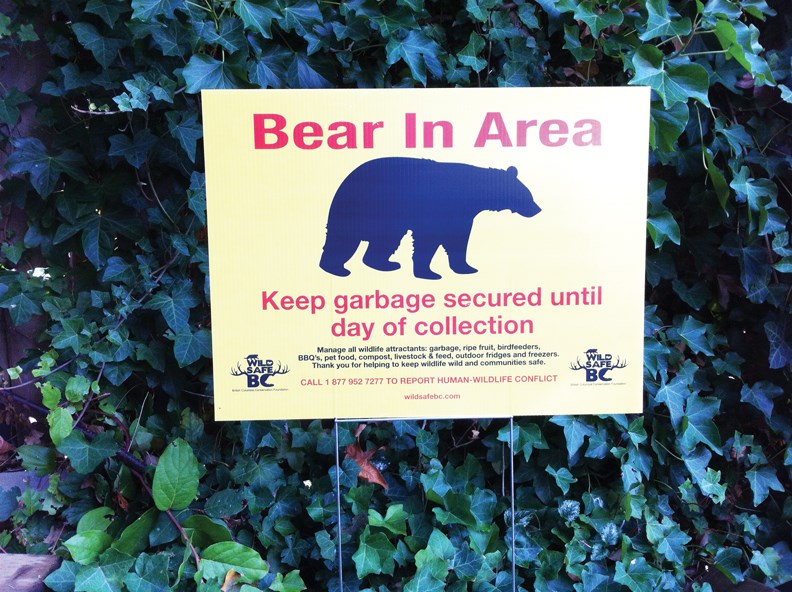Last month I mentioned that it had been a slow summer in terms of human-bear conflict reports. Well, bear activity is picking up now, and fast. There are several family units (sows with cubs) and individual bears actively foraging for foods in or nearby several neighbourhoods throughout the Sunshine Coast.
Now is definitely the time to keep garbage and birdfeeders inside and pick your fruit and nut trees. If you are unable to harvest your trees, then contact the Sunshine Coast Fruit Tree Project (via One Straw Society) to have volunteers come and pick the fruit for you. Install electric fencing around your chickens, livestock feed and crops – it is a proven and effective bear deterrent.
There have also been several incidents with bears accessing outdoor fridges and freezers; it is advisable to keep these empty until the start of denning period (late November to December). A bear’s sense of smell is seven times greater than a bloodhound – they can certainly identify the potential food reward that you might have in an easily accessible outdoor appliance. Outdoor fridges and freezers are a strong temptation to a bear. Bears are incredibly strong and can be very determined if they catch a scent of something like salmon or ice cream. An outdoor appliance with a food reward inside is no match for a black bear that is ruled by its belly.
As the bears now enter into hyperphagia stage, they are seeking upwards of 20,000 calories per day, and some will forage up to 20 hours per day. Although their natural diet should consist primarily of plant matter and fish, they will soon become drawn to human-sourced foods such as birdfeed, fruit from trees and garbage. Bears can also be attracted to petroleum-based products and items such as dirty diapers and citronella candles.
Our online giveaway of a certified bear-resistant TyeDee Bin Cub Unit will be awarded on Sept. 12. This unit could be used to securely store garbage or livestock feed. Visit the wildsafebc-sunshinecoast Facebook page to enter.
I now have 10 Bear In Area signs and am placing them in neighbourhoods with significant bear activity. A habituated bear may be in the area and may have begun to access garbage, birdfeeders, fruit and other attractants. It is a reminder to residents to increase awareness and to identify and secure their attractants before the bears find them. Email [email protected] with your location, nature of human-bear conflict and suggestion for placement. The signs stay up for 24 to 72 hours.
If there is a bear in your area, always make noise before coming outside (especially at dawn or dusk); this may alert the bear and give it time to move on. Most bears usually want to avoid humans. If they are treed or in your yard, please allow them an escape route and give them time to leave the area. Slowly back away, go inside (do not run) and consider using noise (air horn) to let the bear know it is not welcome. When phoning the RAPP Line (1-877-952-7277), ask yourself what may have brought the bear onto your property (attractants) in the first place? Identify any attractants and remove them. A fed bear is a dead bear. If a bear doesn’t find a food reward on your property, it will keep moving through. This makes it safer for you, and safer for them.



